Mad Hedge Technology Letter
March 14, 2025
Fiat Lux
Featured Trade:
(TECH SECTOR HEADING TO A NEW SPACE)
(DBX), (MCHP), (META), (MSFT)

Mad Hedge Technology Letter
March 14, 2025
Fiat Lux
Featured Trade:
(TECH SECTOR HEADING TO A NEW SPACE)
(DBX), (MCHP), (META), (MSFT)

Anyone out there who has children in high school or college, the best piece of advice to give them to prepare for a highly lucrative career in technology is that their path will most likely start outside of the United States.
Why?
In one fell swoop, Big Tech and other smaller tech firms have decided that American salaries are not worth the money and have accelerated a full-on position migration to the rest of the world.
The salary arbitrage is something that gets missed in corporate America but is also a reason why these American tech companies keep beating earnings results.
Everyone knows the biggest expensive line item to a tech firm isn’t the software, but the salaries.
Every executive I talk to has widespread plans to cut jobs, whether it be in Seattle, Washington, or Los Angeles, California, and install them in places like India, Moldova, or even notorious Ukraine.
This is happening quietly, but the trend has picked up pace in 2025.
The early numbers in the United States are portending poorly for US employment and many good tech jobs will be reinstalled in cheaper countries and paid 5X lower than what it once was.
Since 2017, the United States has created 0 jobs for native born Americans, and this is part of the reason why.
Compounding the situation, in a global survey, some 61% of tech companies worldwide said they expected to reduce their workforces over the next five years because of the rise of artificial intelligence.
Tech firms such as Dropbox and IBM have previously announced job cuts related to AI. Tech jobs in big data, fintech, and AI are meanwhile expected to double by 2030.
The digital-financial-services company Ally is firing roughly 500 employees, or 7% of staff.
Ally made a similar level of cuts in October 2023, the Charlotte Observer reported.
Jeff Bezos's rocket company, Blue Origin, is sacking about 10% of its workforce, a move that could affect more than 1,000 employees.
Meta CEO Mark Zuckerberg told staff he "decided to raise the bar on performance management" and will act quickly to "move out low-performers." On just recently, the company had laid off more than 21,000 workers since 2022.
Microchip Technology is cutting its head count across the company by around 2,000 employees, the semiconductor company said a few days ago.
Last year, Microchip announced it was closing its Tempe, Arizona facility because of slower-than-anticipated orders. The closure begins in May 2025 and is expected to affect 500 jobs.
Microsoft cut an unspecified number of jobs in January based on employees' performance.
If anyone thinks this is a blip on the radar, then check your head again.
Once the WFH (work from home) movement started during 2020, there was no going back from there.
Tech companies don’t need warm bodies in offices anymore, so physical location doesn’t matter for lower-level employees.
95% of Silicon Valley will now be outsourced, and all “entry-level” jobs will originate in low-cost-of-living countries.
This is the new American tech sector. Ownership will still be mostly American, but workers will be offshore.
What is the result of this?
Tech stocks will stay higher for longer because of the massive cost savings in wages, which will allow management to beat earnings quarter after quarter.
It gives the balance sheet a reprieve allowing tech to hire more workers elsewhere for less money even if they aren’t an equal replacement.
It also opens the opportunities to deliver more value back to shareholder in the form of dividends or stock splits.
Tech firms won’t die off, but balance sheets will be financially engineered to the max to the benefit of executive management and to the chagrin of the American tech worker.
Once the macroeconomic backdrop calms, it will be time again to jump into tech stocks.

Mad Hedge Technology Letter
June 4, 2021
Fiat Lux
Featured Trade:
(RIDING THE COATTAILS OF ELLIOT MANAGEMENT)
(DBX), (TWTR), (EBAY), (CRM), (BOX)

Renowned Vulture Fund Elliott Management is at it again, looking to feast on the frail like the predator fund it is.
It was recently announced they own a large stake in cloud provider Dropbox (DBX) and has been holding private discussions with the file-sharing service provider for some time.
The hedge fund owns a stake of more than 10% which is valued at more than $800 million, the source said, declining to reveal the exact size of the investment.
Dropbox currently has a market cap of around $11 billion.
This is a cloud company that allows users to store documents, videos, and photos online, listed its shares in March 2018 at $21 a share.
Elliott has previously gotten their way at other tech companies like Twitter (TWTR) and eBay (EBAY).
Now Elliott Management is assumed to own the second biggest holding in Dropbox after CEO Drew Houston.
Elliot’s previous 13-F filing form has shown they are scooping up shares of Dropbox.
Dropbox shares also gained in March on news of a potential takeover that never came to fruition, and it smells a lot like that was Elliot.
I have heard other analysts mention Dropbox as a short-listed acquisition candidate for a handful of big players.
An acquisition looked close especially after Salesforce (CRM) announced the purchase of Slack Technologies and it’s logical that Dropbox could have been a retaliation purchase for a bigger tech company looking to keep pace with Salesforce's acquisitive thirst.
Elliot Management overtook Vanguard Group Inc. as the largest shareholder outside of Houston. Vanguard had a stake just below 10% as of March 31, according to Bloomberg.
The hedge fund has not made it clear whether it is seeking board seats on Dropbox’s board or other changes at the company.
But I will tell you there is a standard playbook that Elliot loves to roll out each time they buy into a tech company.
These changes almost always revolve around switching management and squeezing out more efficiencies in operations.
They even threatened Founder and CEO of Twitter Jack Dorsey to become more attuned to revenue acceleration so he could keep his job.
There are those who want to play the moral compass card out there, but I can say that almost any tech company Elliot Management has bought into experience a significant boost in asset appreciation 3-6 months after the acquisition.
Elliot is hyper-targeted in what they do, and they usually seek out management who has become too comfortable in their routine.
I believe they do not go after tech companies if they feel they cannot boost the underlying stock shares by 30% within a year.
They have a brilliant track record and any tech investor who doesn’t want to overcomplicate tech investing buys the same tech companies Elliot acquires.
Why?
Because changes are in the pipeline and every management or board seat change is usually met with a 5-7% surge in share price.
What’s not to like about that?
Then there are many up days on the operational front from cutting costs, and forcing through other changes that are first and foremost beneficial for the stakeholders of the company.
Other vulture fund specialists do this too like Starboard Value when they launched a proxy fight earlier this year at Box (BOX), where it has nominated four directors for the three seats that are coming available this year.
To play it simple, buy into Dropbox on the next dip and hold onto shares for the first part of the turnaround.
Once the pace of changes starts to plateau, by then, you should already have a decent-sized profit and can dump the shares.
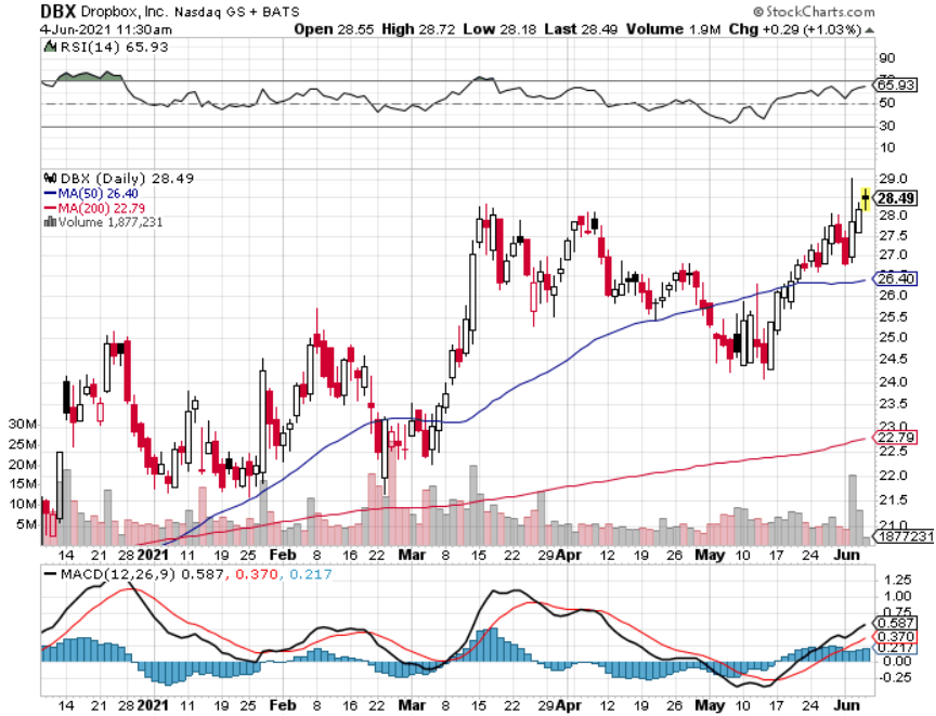
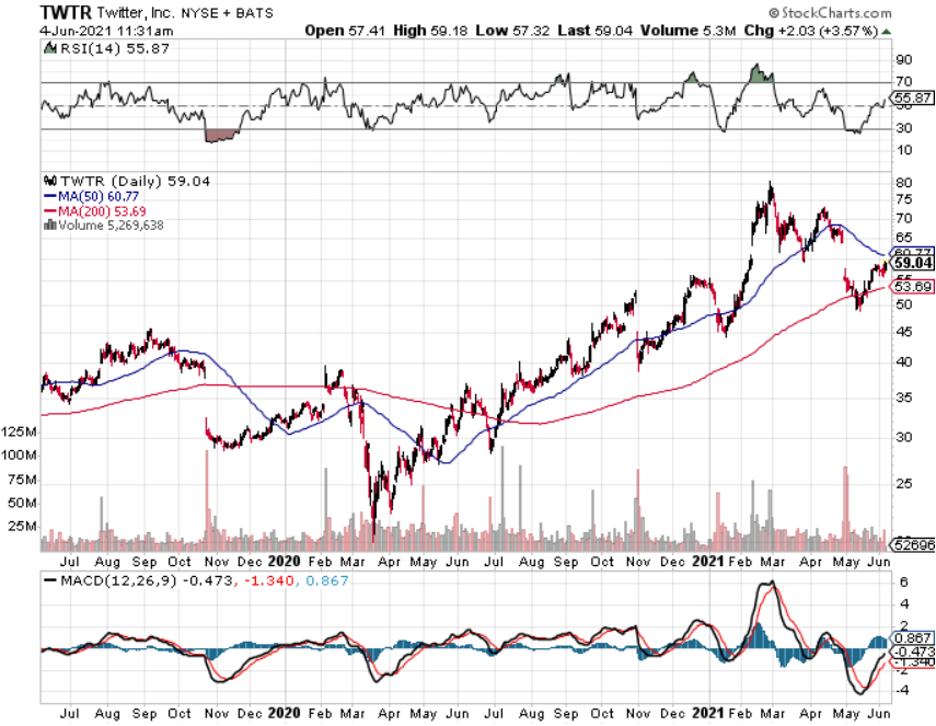
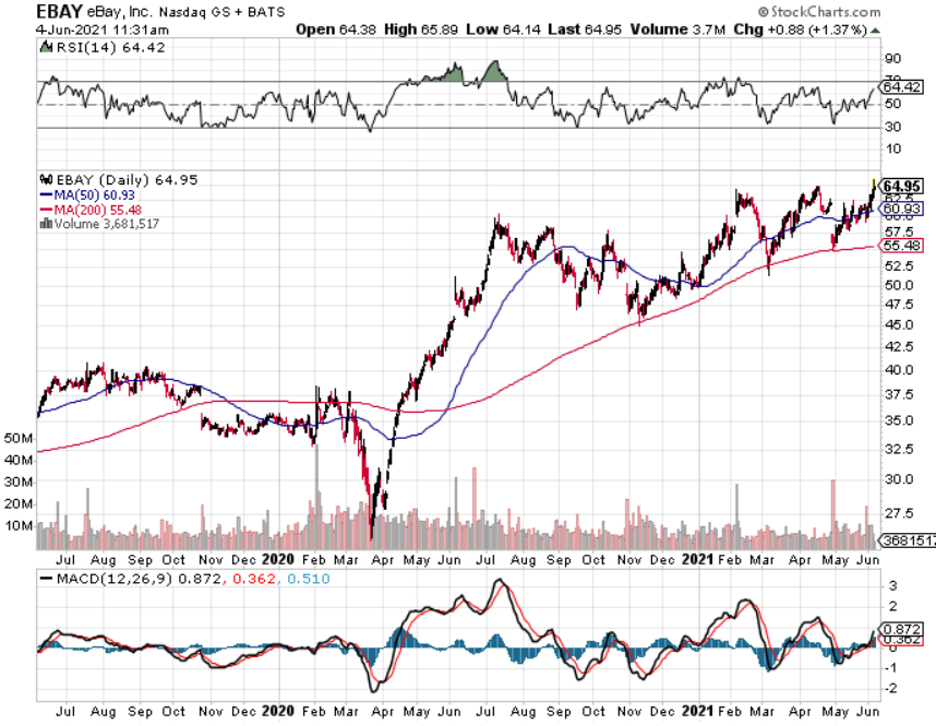
Mad Hedge Technology Letter
February 24, 2020
Fiat Lux
Featured Trade:
()
(DBX), (ZS)

I have been adamant that 2020 is a time to be cherry-picking the best of the 2nd tier tech stocks like Twitter, eBay, Adobe, and Fortinet.
But investors must be aware that in the 2nd and 3rd tiers of the tech landscape, nothing is guaranteed, and the downside price action and the inflection points can be hard to swallow.
One stock that has been on both sides of the fence is cloud computing company Dropbox (DBX).
Dropbox shares exploded Friday morning up over 23% trending towards their best single-day performance.
Believers think this stock has finally shaken off the cobwebs.
Dropbox has it hard as it competes with the behemoths of Amazon, Google, and Microsoft for the same pie in the Cloud game.
To keep its head above water, they must tread harder than the bigger guns and the lack of traction in the past year doomed them to a -26% share return for investors.
Well, investors have gotten back their losses in one day and could close above its initial-public-offering price of $21 for the first time since September.
My underlying thesis of second-tier tech stocks either sinking or swimming partly has to do with the manner in which they are able to navigate against bigger companies who are in catch-and-kill mode via buyouts.
A highly bullish signal was when management at Dropbox decided to raise its operating-margin and free-cash outlook for 2020 and over the long term.
Superior operating margin was one of the hyped-up metrics that management tried to sell investors post-IPO but they never followed through and the stock cratered.
Dropbox has also revealed that higher margins will not be at the expense of cost cuts affecting the top line and has more to do with superior growth drivers which are always positive.
The new operating margin forecast for Dropbox is between 28% to 30% compared with a prior range of 20% to 22%, and that is a big deal.
There is a nuanced relationship between growth and profitability and Dropbox cannot lose sight of either because if top line misses badly, the operating margin beat is less meaningful.
At the bare minimum, the tone of the earnings report has investors chomping at the bit inciting a massive rally in shares and turning around the narrative for this once beleaguered company.
Many times the negativity can become a self-fulfilling prophecy.
It is difficult to break momentum in software stocks in either direction and now the onus is on Dropbox’s management to prove they can surpass margin forecasts or there could be a reverse 20% drop in the stock.
There are still bears out there who believe this wasn’t enough to convince them to change their mind.
Bears have cited a lack of sustained growth and a tendency to miss on subscriber numbers as the Achilles heel.
Because of the small nature of these companies, volatility goes hand in hand with their price action.
The Mad Hedge Technology Letter prefers to bundle itself with stocks that have more reliable price action.
A perfect example of volatility disturbing a stock would be a cybersecurity company that I have been quite bullish on named Zscaler (ZS).
The cloud security company delivered lighter-than-expected profit guidance for the third quarter and fiscal year and the stock slipped down 15%.
That would never happen to Google or Facebook shares in the same scenario.
Zscaler’s second-quarter report was robust and even had a billings’ beats of 15% year-over-year.
Meanwhile, hints of revenue deceleration and margin contraction in the second half were enough to kill shares in trading.
Traders who can filter through the bluster must time entry points in small-cap tech perfectly otherwise one mistimed word on an earnings report can sink a trade with no chance to exit.
Separating the wheat from the chaff is what we do here at the Mad Hedge Technology Letter.
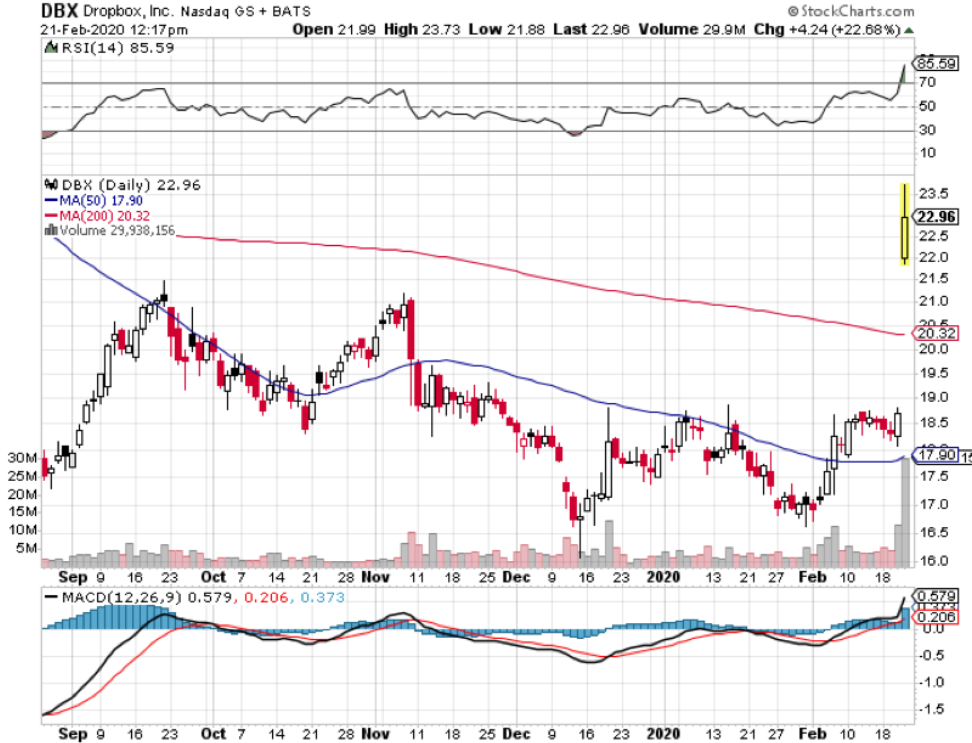
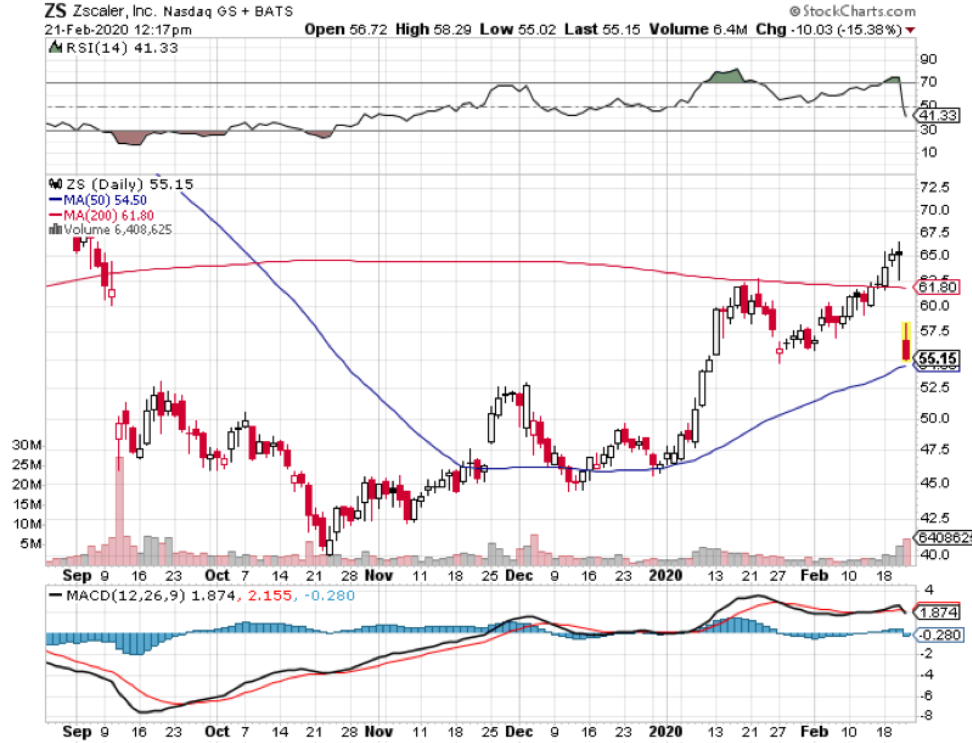
Mad Hedge Technology Letter
December 19, 2018
Fiat Lux
Featured Trade:
(HOW TECH IS EATING INTO HEALTHCARE COSTS)
(VEEV), (CRM), (GSK), (AZN), (MRK), (NVS), (DBX), (OKTA), (TWLO)

It’s undeniable that American healthcare costs are a big part of a family’s monthly expenses.
Rising deductibles and out-of-network fees are a few of the out-of-pocket costs that can singe a hole in the average joes’ pocket.
It was only in 2016 when healthcare insurance costs eclipsed more than $10,000 a year per person, and over the past 12 months, 68% of people surveyed admitted that future healthcare costs would probably consume a larger part of their earnings.
The result is that healthcare companies are making money hand over fist.
Is there something that I deduce from this lucrative part of the economy that has the potential to feed into the tech sector?
The tidal wave of money spilling into the healthcare industry has also given impetus to these firms hoping to buttress their networks and IT with modern tech infrastructure to take advantage of the efficiencies on offer.
Building the best cloud services geared towards specific industries has been a winning formula and the generated momentum will continue into the next calendar year.
Prime models can be seen all over the tech ecosphere and they will be big winners of 2019.
One example is Twilio (TWLO) who has quietly risen the bar for communication cloud products.
A panoply of small companies can now offer professionalized email, text message, automated voice mail services amongst other services that do the work of 100 employees.
Recently, I touched on a cloud company named Okta (OKTA) responsible for managing the facilitation of passwords.
This identity management company was formed by a group of former Salesforce executives.
In my book, a Salesforce (CRM) credential is a golden stamp of approval for newly formed cloud-companies seeking to develop new cloud products in broad industries.
Why?
Salesforce’s client relationship management platform (CRM) is ubiquitous and the most popular enterprise software.
The way they develop their model is by launching and acquiring new e-commerce and marketing services - which lure in customers into its walled gardens.
Salesforce also applies its artificial intelligence platform Einstein to harness customer relationships and help businesses carry out decisions based on data alone instead of testosterone and emotion.
This all means that Salesforce executives have their finger on the pulse of the cloud landscape and know how to build a cloud business from scratch which is valuable.
They know what certain industries require to mushroom and can deploy resources in the quickest way possible while surrounding themselves by hordes of software engineers who can be poached for a certain fee.
The framework being in place is a massive bounty for these executives who just line up the dots then motor on to an industry confirmed by the data.
And remember that 99.9% of people do not have access to this proprietary data.
Consequently, they know more about corporate America than most Fortune 500 CEOs.
Marrying up the healthcare industry to the cloud was just a matter of time.
Veeva Systems (VEEV) is a cloud-computing company focused on pharmaceutical and life sciences industry applications.
Founder and CEO of Veeva Systems Peter Gassner cut his teeth at Salesforce serving as Senior Vice President of Technology.
His job was building the salesforce.com platform including product, marketing and developer relations.
Gassner has effectively transplanted the Salesforce platform model and applied it to the life sciences industry and has done a great job doing it.
The Veeva Commercial Cloud includes a CRM platform that aids drug company’s management of clients.
The Veeva Vault is a tool that tracks industry regulations, clinical trials, and recommends actionable habits in the cloud.
Veeva's CRM platform is powered by the Salesforce1 app development platform and is integrated into the broader Salesforce Marketing and Service Clouds.
The first mover advantage has offered all the low-hanging fruit for Veeva.
The lack of competition surely never lasts but the extra time to pad their lead is only a positive to its business model.
Veeva has already lured in some of the health industries biggest names such as GlaxoSmithKline (GSK), AstraZeneca (AZN), Merck & Co. (MRK), and Novartis (NVS).
These heavy hitters are meaningfully tied to its ecosystem, and it is safe to say that these relationships are only scratching the surface and have the potential to expand as Veeva installs more add-on tools into its platform.
The popularity shows up in the numbers with Veeva’s 3-year sales growth rate hovering around 30%.
Even better, the profitability of Veeva is indicative of the strength in its business model. They are simply at the right place at the right time to capture the momentum from the digital crossover in the healthcare industry.
Many similar names like Dropbox (DBX) are enormous loss-making enterprises but Veeva has shrugged off this stereotype that many cloud companies of its size can’t be profitable.
The effect of being strategically placed in a position to cherry pick the lucrative healthcare industry has also seeped into the strong profit margins of Veeva able to grow it to over 32%.
Touching more on the profitability, EPS has kicked into gear sequentially rising 80%, and the long-term outperformance is backed up with a 3-year EPS growth rate of 41%.
This cloud company is incredibly profitable for its size, and part of that is the absence of competition which increases pricing power.
Dropbox does not have that luxury of favorable pricing schemes which cripple profitability and leads to attrition and just as harmful – a price war.
Veeva’s forecasts for next year blew past Wall Street’s estimates and the company is modeling for EPS of $1.58 and revenue around $856 million in 2019.
Gassner has even publicly acknowledged that he expects 2019 revenue to come in between $1 billion and $1.1 billion which is a full year ahead of schedule.
The bullish guidance is a clue that the overall cloud story is alive and kicking, and there is absolutely no weakness whatsoever.
Making this story even more compelling is that in the last five years, profits are up six-fold, revenue is up four-fold, and the number of new products is up three-fold.
As we advance into 2019, I believe Veeva is a buy-on-the-dip candidate because of its favorable market position, rapidly expanding margins, and its low enterprise value of $11 billion which deems it, as I daresay, a lucrative buyout target for larger industry cloud players like Salesforce.
The tech industry has a habit of coming full circle become of its network effect of capital, talent, and management.
I would be interested in dipping my toe into any of Salesforce’s offspring because these models are built to scale and are waiting on the doorstep to seize revenue from industry migrating to digital.
Okta did it, and Veeva Systems made the leap of faith too, confirming that the Salesforce method is a path to untold profits for cloud-based software companies.
When the market can finally digest the macro rigmaroles, shares for this innovative and hyper-growth cloud company is set to take off.
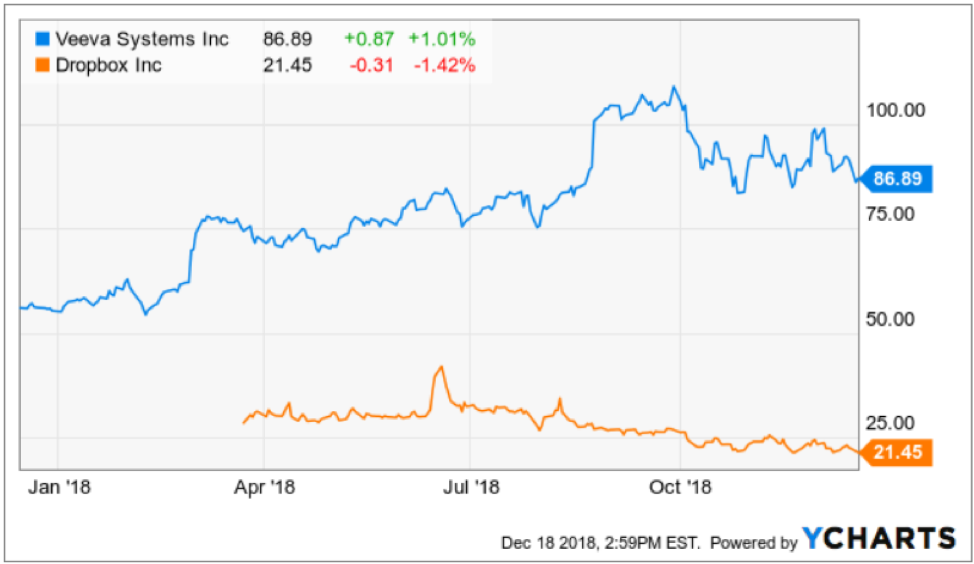
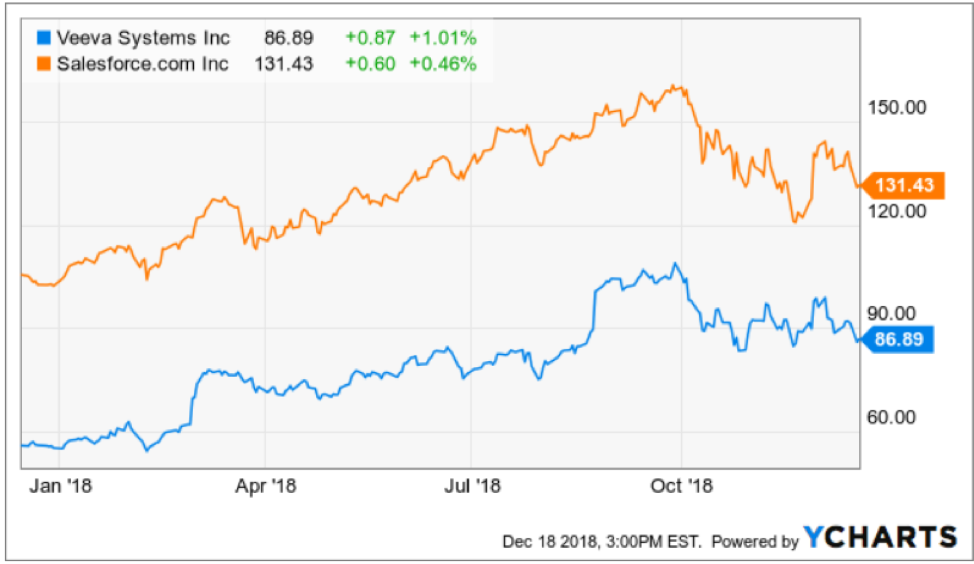
Mad Hedge Technology Letter
July 17, 2018
Fiat Lux
Featured Trade:
(THE PATH AHEAD),
(IBM), (AMZN), (FB), (MSFT), (NFLX), (QQQ), (AAPL), (DBX), (BLK)

The Red Sea has parted, and the path has opened up.
Technology has been a beacon of light providing comfort to the equity market, when a trade war could have purged the living daylights out of bullish investor sentiment.
If an increasingly hostile, tit-for-tat trade skirmish threatening overseas revenue can't bring tech equities to its knees, what can?
It seems the more bellicose the administration becomes, the higher technology stocks balloon.
Does this all add up?
The Nasdaq (QQQ) continues its processional march skyward. If you were a portfolio manager at the beginning of the year without technology exposure, then polish off the resume before it picks up too much dust.
The Nasdaq has set all-time highs even after a brutal 700-point sell-off at the end of January.
Apple (AAPL), Microsoft (MSFT), Netflix (NFLX), and Amazon (AMZN) can take credit for 83% of the S&P 500's gains in 2018.
And that fearsome four does not even include Facebook (FB), which has left the shorts in the dust.
Each momentous sell-off has proved to be a golden buying opportunity, propelling tech stocks to higher highs and retracing to higher lows.
And now the path to tech profits is gaping wide, luring in the marginal investor after two highly bullish events for the tech world boding well for the rest of fiscal year 2018.
Xiaomi, one of China's precious unicorns, which sells upmarket smartphones, went public on the Hong Kong Hang Seng market last week.
The timing couldn't be poorer.
The rhetoric between the two global leaders reached fever pitch with the administration proposing $200 billion worth of tariffs levied on Chinese imports.
China reiterated its entrenched stance of not backing down, triggering a tense war of words between the two global powers.
The beginning of March saw the Shanghai stock market nosedive through any remnants of support levels.
The 50-day moving average, 100-day, and 200-day were smashed to bits and Shanghai kept trending lower.
The trade skirmish has had the reverse effect on Chinese equities compared to the Nasdaq's brilliance, and combined with the strong dollar, has seen emerging markets hammered like the Croatian soccer team in Moscow.
Xiaomi's IPO was priced in the range of HK$17 to $22, and when it opened up on the first day at HK$16.60, investors were holding their breath.
Take the recent IPO triumph of cloud company Dropbox (DBX), whose IPO was priced in the expected range of US$18 to $20. The first day of trading showed how much appetite there is for to- quality cloud companies, with Dropbox starting its trading day at US$29, 40% higher than the expected range.
Dropbox finished its first day at a lofty US$28.48, a nice 35% return in one trading day.
No doubt Xiaomi's shares were not expected to perform like Dropbox, but it held its own.
Astonishingly, this company did not even exist nine years ago and is now the fourth-largest smartphone manufacturer in the world, grossing $18 billion in revenue in 2017.
The unimaginable pace of development highlights the speed at which the Chinese economy and consumer zigs and zags.
Chinese retail sales were up a staggering 9% YOY for the month of June 2018. Its overall economy met its 6.7% target for the second quarter of 2018.
The price range settled for the IPO gave Xiaomi a valuation of $54 billion.
Instead of getting roiled, Xiaomi came through with flying colors posting a 26% gain after the first week of trading.
Poor price action could have given Beijing ammunition to cry foul, laying blame for the underperformance on the U.S. tariffs.
The healthy price action underscores there is still room for Chinese and American companies to flourish in 2018, albeit through a highly politicized environment.
Specifically, Apple comes through unscathed as a disastrous Xiaomi IPO could have resulted in negative local press stoking higher operational risks in greater China.
Apple is in the eye of the storm, but untouchable because it employs more than 4 million local Chinese employees throughout its expansive ecosystem and has been praised by Beijing as the model foreign company.
Apple earned $13 billion in revenue from China in Q2 2018, a 21% YOY increase.
Hounding Apple out of China will be the inflection point when tech investors know there is a serious problem going on and need to hit the eject button.
If this ever happens, The Mad Hedge Technology Letter will be the first to resort to risk off strategies.
BlackRock's (BLK) CEO Larry Fink let everyone know his piece saying, "the lack of breadth in the equity markets is troubling."
Investors cannot blame tech companies for executing their way to the top behind the tailwind of the biggest technological transformation in mankind.
And even in the tech industry, winners can turn into losers in a blink of an eye, such as legacy tech company IBM (IBM).
Someone better tell Fink that this is the beginning.
Amazon recorded 44% of total U.S. e-commerce sales in 2017, equaling 4% of total retail sales in the U.S.
This number is expected to breach 50% by the end of 2018.
The second piece of bullish tech news was lifting the ban on Chinese telecommunications company ZTE.
It is open for business again.
From a national security front, this is an unequivocal loss. However, it saved 75,000 Chinese jobs and gave a small victory to American regulators attempting to patrol the mischievous behemoth.
The U.S. Department of Commerce lifted the seven-year ban even after ZTE sold telecommunication products to North Korea and Iran.
ZTE was fined $1 billion, changed the senior management team, and put into place an American compliance team that will monitor its business for the next 10 years.
Diluting the penalty lowers the operational risk for American tech companies because it shows the administration is willing to reach compromises even if the compromise isn't perfect.
China is a lot less willing to ransack Micron and Intel's China revenues, if America allows China to save face and 75,000 local jobs.
This is a big deal for them and their employees.
America has a strong hand to play with against China because China still requires Uncle Sam's semiconductor components to build its future.
This hand is only effective if Chinese still thirst for American technology. As of today, America is higher on the technological food chain than China.
The move is also a model of what the U.S. Department of Commerce will do if Chinese companies run amok, which Chinese tech companies often do because of the lack of corporate governance and transparency.
These two recent China events empower the overall American tech sector, and the market will need a berserk shock to the tech ecosphere foundations to make it crumble.
As it stands, the tech sector is handling the trade war fine, and with expected blowout tech earnings right around the corner, short tech stocks at your own peril.




________________________________________________________________________________________________
Quote of the Day
"All of the biggest technological inventions created by man - the airplane, the automobile, the computer - says little about his intelligence, but speaks volumes about his laziness," - said author Mark Kennedy.

Legal Disclaimer
There is a very high degree of risk involved in trading. Past results are not indicative of future returns. MadHedgeFundTrader.com and all individuals affiliated with this site assume no responsibilities for your trading and investment results. The indicators, strategies, columns, articles and all other features are for educational purposes only and should not be construed as investment advice. Information for futures trading observations are obtained from sources believed to be reliable, but we do not warrant its completeness or accuracy, or warrant any results from the use of the information. Your use of the trading observations is entirely at your own risk and it is your sole responsibility to evaluate the accuracy, completeness and usefulness of the information. You must assess the risk of any trade with your broker and make your own independent decisions regarding any securities mentioned herein. Affiliates of MadHedgeFundTrader.com may have a position or effect transactions in the securities described herein (or options thereon) and/or otherwise employ trading strategies that may be consistent or inconsistent with the provided strategies.
This site uses cookies. By continuing to browse the site, you are agreeing to our use of cookies.
OKLearn moreWe may request cookies to be set on your device. We use cookies to let us know when you visit our websites, how you interact with us, to enrich your user experience, and to customize your relationship with our website.
Click on the different category headings to find out more. You can also change some of your preferences. Note that blocking some types of cookies may impact your experience on our websites and the services we are able to offer.
These cookies are strictly necessary to provide you with services available through our website and to use some of its features.
Because these cookies are strictly necessary to deliver the website, refuseing them will have impact how our site functions. You always can block or delete cookies by changing your browser settings and force blocking all cookies on this website. But this will always prompt you to accept/refuse cookies when revisiting our site.
We fully respect if you want to refuse cookies but to avoid asking you again and again kindly allow us to store a cookie for that. You are free to opt out any time or opt in for other cookies to get a better experience. If you refuse cookies we will remove all set cookies in our domain.
We provide you with a list of stored cookies on your computer in our domain so you can check what we stored. Due to security reasons we are not able to show or modify cookies from other domains. You can check these in your browser security settings.
These cookies collect information that is used either in aggregate form to help us understand how our website is being used or how effective our marketing campaigns are, or to help us customize our website and application for you in order to enhance your experience.
If you do not want that we track your visist to our site you can disable tracking in your browser here:
We also use different external services like Google Webfonts, Google Maps, and external Video providers. Since these providers may collect personal data like your IP address we allow you to block them here. Please be aware that this might heavily reduce the functionality and appearance of our site. Changes will take effect once you reload the page.
Google Webfont Settings:
Google Map Settings:
Vimeo and Youtube video embeds:
